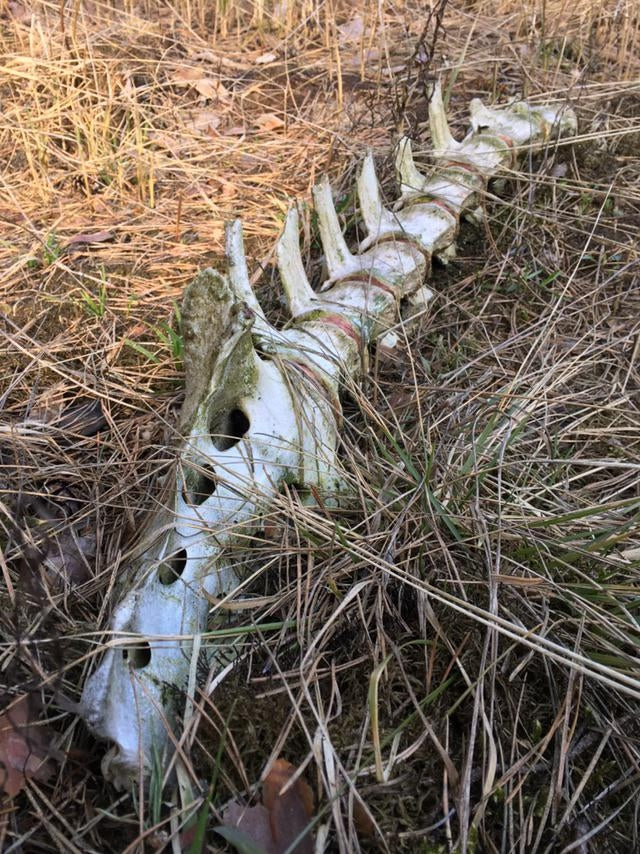
Cleaning Nature Found Bones
Cleaning bones found in nature is an important step, even if they appear clean to the naked eye--it is not a guarantee that they are grease free.
Assessment: Start by examining the bones carefully to check for any fragile areas, cracks, or signs of deterioration. This helps determine the best cleaning methods to use.
Protection: Before you begin cleaning, make sure to wear protective gear such as gloves, a mask, and/or safety goggles to protect yourself from potential hazards.
Initial Cleaning: Use a soft brush or cloth to remove any loose dirt, debris, or organic matter from the bones. This prepares them for the degreasing process by getting rid of surface contaminants.
Degreasing: Prepare a degreasing solution by mixing warm water with Dawn or Fairy, or use straight clear ammonia. Submerge the bones in the solution and let them soak for several days to weeks depending on the size of the bones. Occasionally agitate the solution to help loosen grease and oils, making them easier to remove.
Scrubbing: After soaking, gently scrub the bones with a soft brush to remove any remaining residue. Rinse the bones thoroughly under running water to ensure all traces of the degreasing solution and loosened debris are washed away.
Whitening (Optional): If desired, you can whiten the bones to improve their appearance. Submerge the bones in hydrogen peroxide for several hours or overnight, monitoring them closely to prevent over-processing. Time needed for a whitening bath depends on the percentage peroxide used (3% will take a few days, but 12% usually works within 48 hours or less). Rinse the bones thoroughly under running water after whitening.
Drying: Pat the bones dry with a clean cloth or paper towels to remove excess moisture. Allow the bones to air dry completely in a well-ventilated area away from direct sunlight and humidity.
Protection (Optional): To protect the cleaned bones and enhance their appearance, you can apply a thin layer of clear acrylic spray or varnish. This step is optional but can help preserve the bones and give them a polished finish.
Storage: Store the cleaned bones in a cool, dry place away from sunlight and moisture. Avoid storing them in plastic bags or airtight containers, as this can trap moisture and promote mold growth. Instead, use breathable containers or display cases designed for bone preservation.